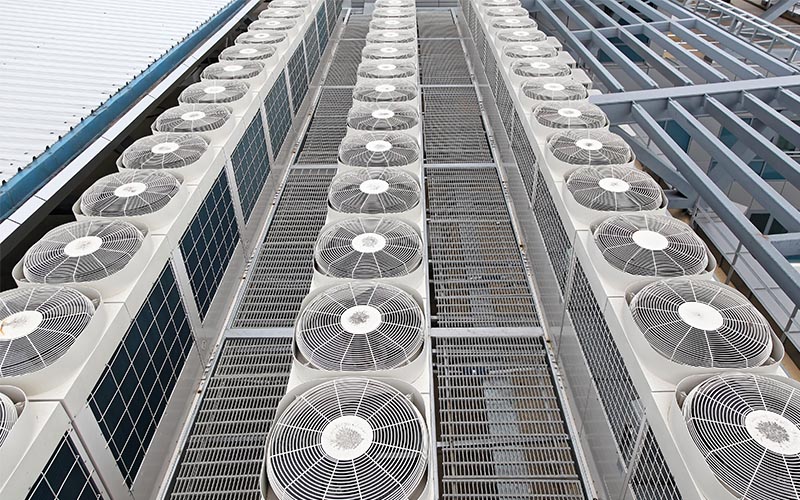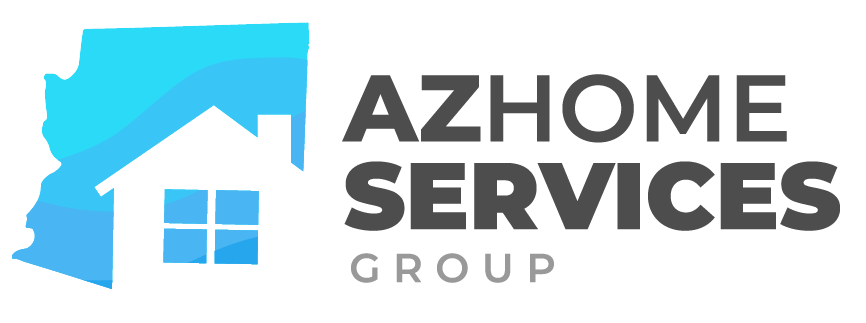HVAC Pricing Guide for Service Business Owners

If you’re a service business owner, then you know that pricing your services can be a challenging task. You want to charge enough to cover your costs and make a profit, but you don’t want to price yourself out of the market. Fortunately, there are some tips you can follow to help you come up with a pricing strategy for your HVAC business. Here’s a look at a few of them:
1. Know your costs. Before you can price your services, you need to know how much it costs you to provide them. This includes both direct and indirect costs.
2. Research the competition. Take a look at what other HVAC businesses in your area are charging for their services. This will give you an idea of what the going rate is for the type of services you provide.
3. Consider your target market. When you’re setting your prices, you need to think about who your target market is. If you’re aiming for the high-end market, then you can charge more than if you’re targeting the budget-conscious customer.
4. Offer discounts. Many service businesses offer discounts to their customers. This can be a great way to attract new business and keep your existing customers coming back.
5. Set bundled pricing. Another option is to bundle your services together and offer a discount for doing so. This is a great way to increase your profits while still providing a good value to your customers. By following these tips, you can develop a pricing strategy that works for your HVAC business. Keep in mind that your prices will always be subject to change, so be sure to revisit your pricing strategy on a regular basis to ensure that you’re still providing a good value to your customers.
How to create a HVAC pricing guide for your service business
If you’re in the HVAC business, then you know that pricing can be a tricky thing. There are so many factors to consider, and it can be hard to know where to start. But don’t worry – we’ve got you covered. In this article, we’ll show you how to create a HVAC pricing guide for your service business. First, you need to decide what services you’re going to offer. Will you be doing repairs, installations, or both? Once you’ve got that figured out, you need to come up with a pricing structure. Many businesses charge by the hour, but you could also charge a flat rate for each job. Next, you need to decide what your pricing will be based on. You’ll need to consider the cost of parts and labor, as well as your overhead costs. Once you’ve got all of that figured out, you can come up with a pricing guide that will help you stay competitive and make a profit. So there you have it – a few tips on how to create a HVAC pricing guide for your service business. By following these tips, you can make sure that you’re charging a fair price for your services and making a profit at the same time.
The benefits of having a HVAC pricing guide
When it comes to making large investments in your home, it’s important to have as much information as possible to make the best decision for your family. That’s why we’ve put together a HVAC pricing guide, so you can be prepared when it’s time to invest in a new system. A quality HVAC system is a big investment, but it’s one that will pay off in the long run. Not only will a new system improve your home’s comfort level, but it will also increase your home’s value. If you’re not sure what size system you need or what type of features you want, our HVAC pricing guide can help. We’ll give you an overview of the different types of systems available and help you choose the right one for your home. We’ll also provide you with a pricing breakdown, so you can see how much each type of system costs. This way, you can make an informed decision about which system is right for your budget. Investing in a new HVAC system is a big decision, but our HVAC pricing guide can help you make the best choice for your home. With our help, you can find the perfect system for your family and your budget.
How to use a HVAC pricing guide to your advantage
If you’re thinking about buying a new HVAC system, you may be wondering how to get the best deal. After all, HVAC systems can be expensive, and you want to be sure you’re getting the best possible price. One way to do this is to use a HVAC pricing guide. These guides can help you compare prices from different vendors and find the best deal. Of course, it’s important to remember that not all HVAC pricing guides are created equal. Some may be more accurate than others, so it’s important to do your research before relying on any one guide. That said, a HVAC pricing guide can be a valuable tool in your quest for the best deal on a new HVAC system. Here’s how to use one to your advantage.
1. Know what you want Before you start shopping around, it’s important to know what you want in a new HVAC system. This will make it easier to compare prices and find the best deal. Think about the features you want, the size of the unit you need, and your budget. Once you have a good idea of what you’re looking for, you can start shopping around.
2. Compare prices Once you know what you want, it’s time to start comparing prices. A HVAC pricing guide can be a helpful tool in this process. By comparing prices from different vendors, you can be sure you’re getting the best possible deal. Remember to take shipping and installation costs into account when comparing prices.
3. Get multiple quotes Don’t just take the first quote you receive. Get multiple quotes from different vendors to be sure you’re getting the best possible price. A HVAC pricing guide can help you find multiple vendors in your area. Be sure to compare apples to apples when getting quotes, though.
4. Negotiate Once you’ve gotten a few quotes, it’s time to start negotiating. If you find a vendor who’s willing to give you a better price, be sure to let them know you’re shopping around. You may be surprised at how much you can save by simply negotiating. Don’t be afraid to haggle!
5. Get it in writing Once you’ve reached an agreement with a vendor, be sure to get the details in writing. This will help avoid any misunderstandings down the road. A HVAC pricing guide can be a valuable tool in your quest for the best deal on a new system. By following these tips, you can be sure you’re getting the best possible price.
The ultimate HVAC pricing guide for service business owners
If you’re in the business of HVAC services, then you know that pricing can be a delicate balance. You want to charge enough to cover your costs and make a profit, but you don’t want to price yourself out of the market. This can be a tricky tightrope to walk, but fortunately, there are some tried and true methods for pricing HVAC services that can help you find the right balance. One of the most important things to keep in mind when pricing HVAC services is your cost of goods sold (COGS). This includes the cost of materials, labor, and any other direct costs associated with providing the service. Once you know your COGS, you can start to markup your prices to ensure you’re making a profit. One common method for pricing HVAC services is to use a standard hourly rate. This rate should cover your costs and leave you with a reasonable profit margin. To determine your hourly rate, start by estimating the average time it takes to complete a job.
Then, calculate your COGS and add a reasonable profit margin. For example, if it takes you two hours to complete a job that costs $100 in materials and labor, you would charge $60 per hour ($100 COGS / 2 hours + $40 profit). Another approach is to price HVAC services using a flat rate. With this method, you’ll need to do some research to find out the average cost of similar services in your area. Once you have a good idea of what others are charging, you can set your own rates based on your costs and desired profit margin. No matter which pricing method you choose, be sure to review your rates regularly and make adjustments as needed. By doing so, you can be sure you’re always charging a fair price for your services.
How to increase profits with a HVAC pricing guide
If you’re looking to increase profits for your HVAC business, one way to do so is by creating a pricing guide. This will allow you to easily and quickly communicate your rates to potential customers, and help you close more sales. Here’s how to create a HVAC pricing guide that will help you boost your bottom line.
1. Start by determining your costs. This includes both the direct costs of your materials and labor, as well as indirect costs such as overhead. Be sure to have a clear understanding of all your costs before setting your prices.
2. Next, decide on a pricing strategy. There are a few different options when it comes to pricing HVAC services. You can charge by the job, by the hour, or by the month. Choose the option that makes the most sense for your business and will be the easiest to communicate to customers.
3. Set your prices. Once you know your costs and have decided on a pricing strategy, it’s time to determine your actual prices. Again, be sure to take all your costs into consideration when setting your rates. Once you have your prices finalized, be sure to put them in writing so you can easily reference them when quoting jobs.
4. Use your pricing guide. Now that you have your pricing guide created, put it to use! When quoting jobs, be sure to reference your pricing guide so potential customers know exactly what they’ll be paying. This will help you close more sales and increase your profits.
5. Review and adjust as needed. Be sure to review your pricing guide periodically to ensure your prices are still in line with your costs. As your costs change, so should your prices. By regularly reviewing and adjusting your prices, you can be sure you’re always making a profit on your HVAC jobs.
The ultimate guide to HVAC pricing for service businesses
If you own a service business, you know that pricing can be one of the most difficult aspects of running your business. You want to charge enough to cover your costs and make a profit, but you don’t want to price yourself out of the market. And, if you’re providing HVAC services, you also have to factor in the cost of parts and labor. The good news is that there are some tried and true methods for pricing HVAC services that can help you strike the right balance. In this guide, we’ll share with you some tips on how to price your HVAC services so that you can stay competitive and make a profit.
1. Know Your Costs The first step in pricing your HVAC services is to know your costs. This includes the cost of parts, the cost of labor, and any other overhead costs associated with providing the service. Once you know your costs, you can begin to determine what you need to charge in order to make a profit.
2. Consider the Competition When you’re pricing your services, it’s important to consider the competition. Take a look at what other HVAC companies in your area are charging for similar services. This will give you a good starting point for determining your own prices.
3. Offer Discounts One way to entice customers to use your services is to offer discounts. This could be for first-time customers, for seniors, or for customers who book multiple services at one time. Offering discounts can help you attract new business and keep your current customers coming back.
4. Use a Tiered Pricing Structure Another pricing strategy you may want to consider is using a tiered pricing structure. This means charging different prices for different levels of service. For example, you could charge a lower price for basic maintenance services and a higher price for more complex repairs.
5. Review Your Prices Regularly Finally, it’s important to review your prices on a regular basis. This will ensure that your prices are still in line with your costs and the competition. Additionally, it will allow you to adjust your prices as needed in order to stay profitable. Pricing HVAC services can be a challenging task. However, by following these tips, you can develop a pricing strategy that works for your business.



